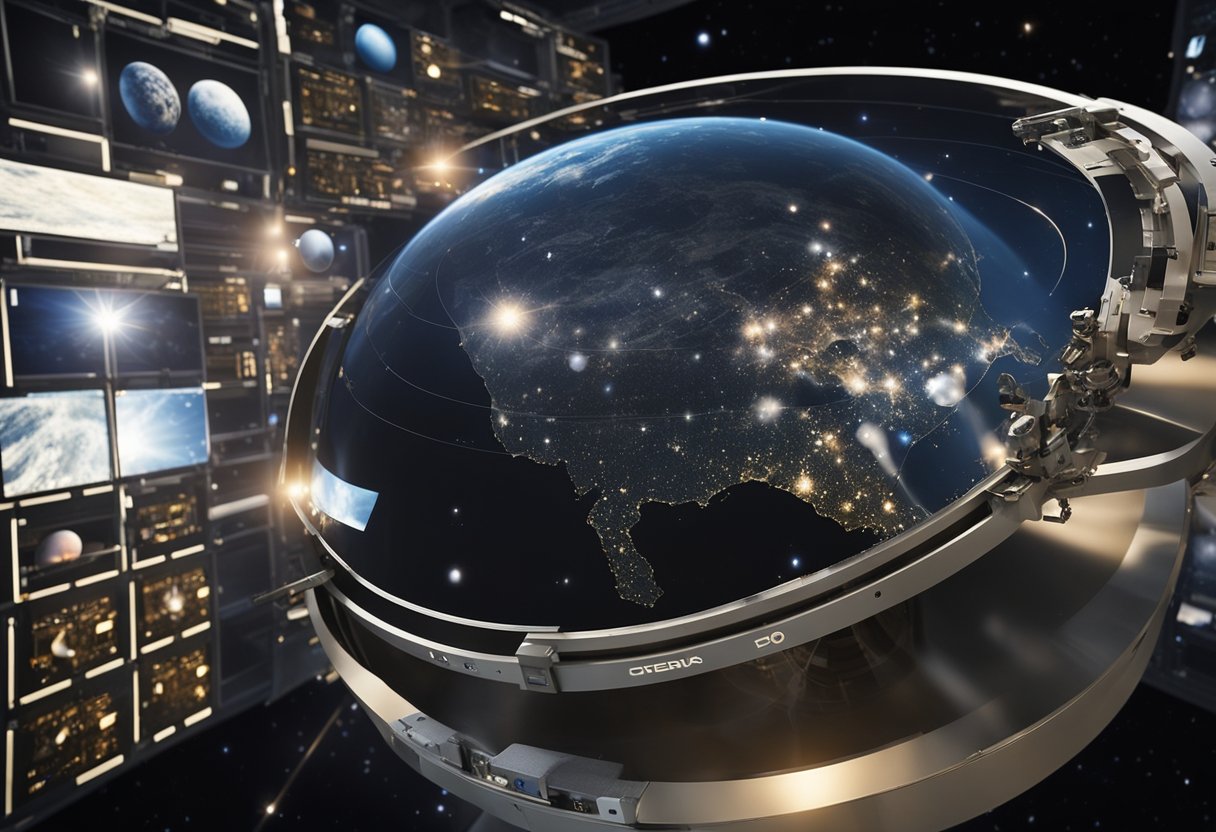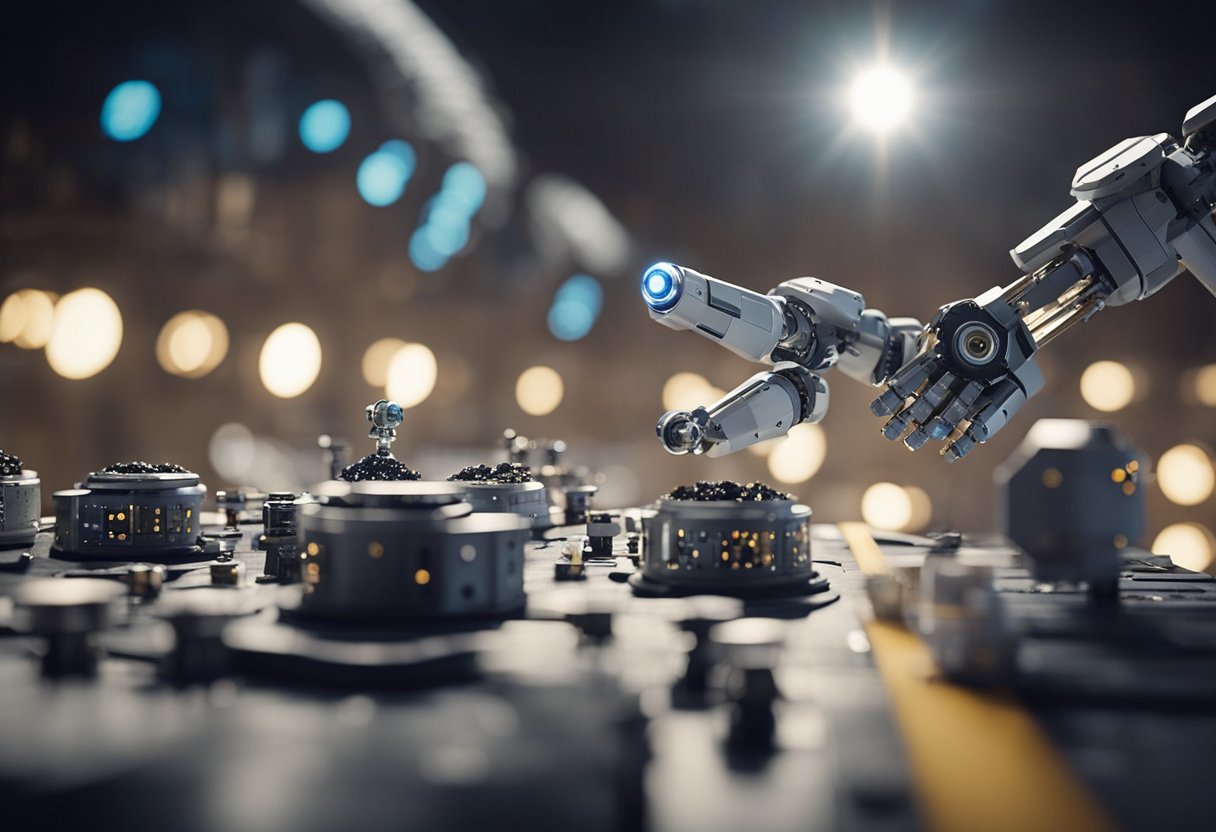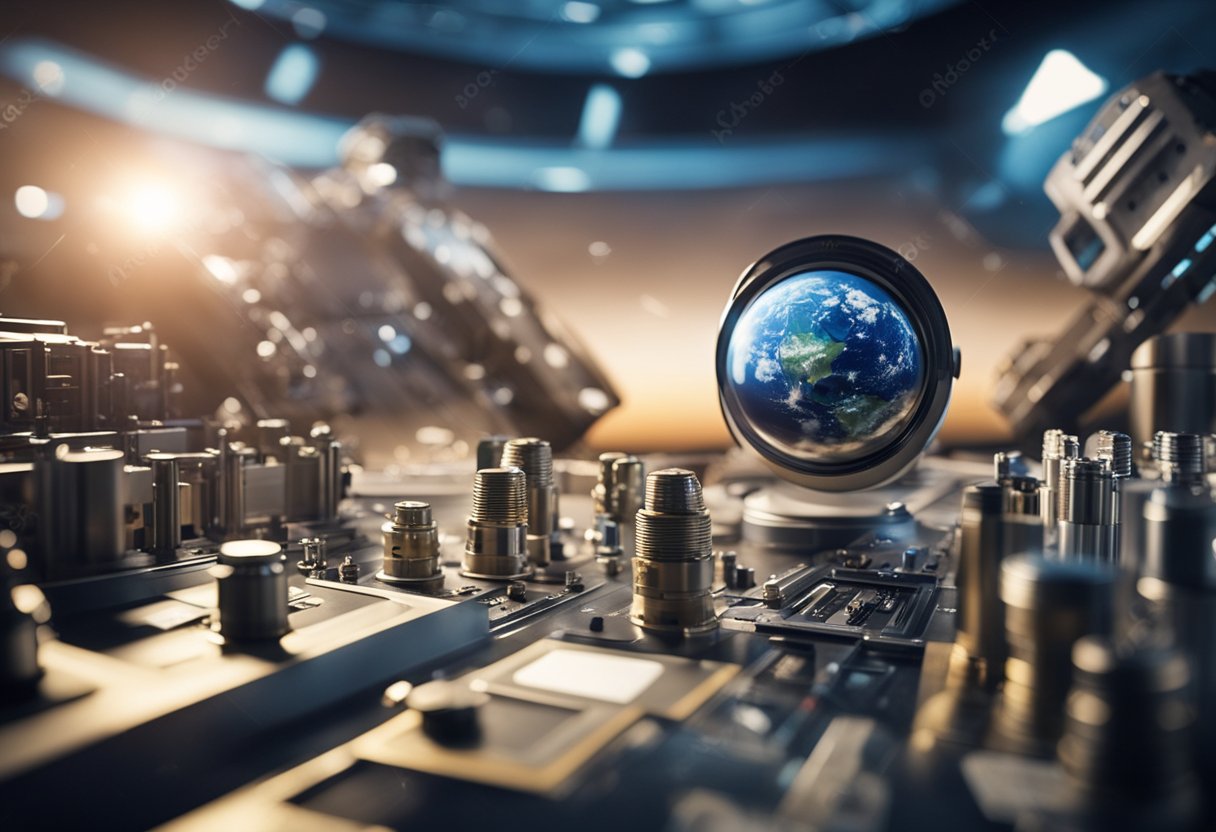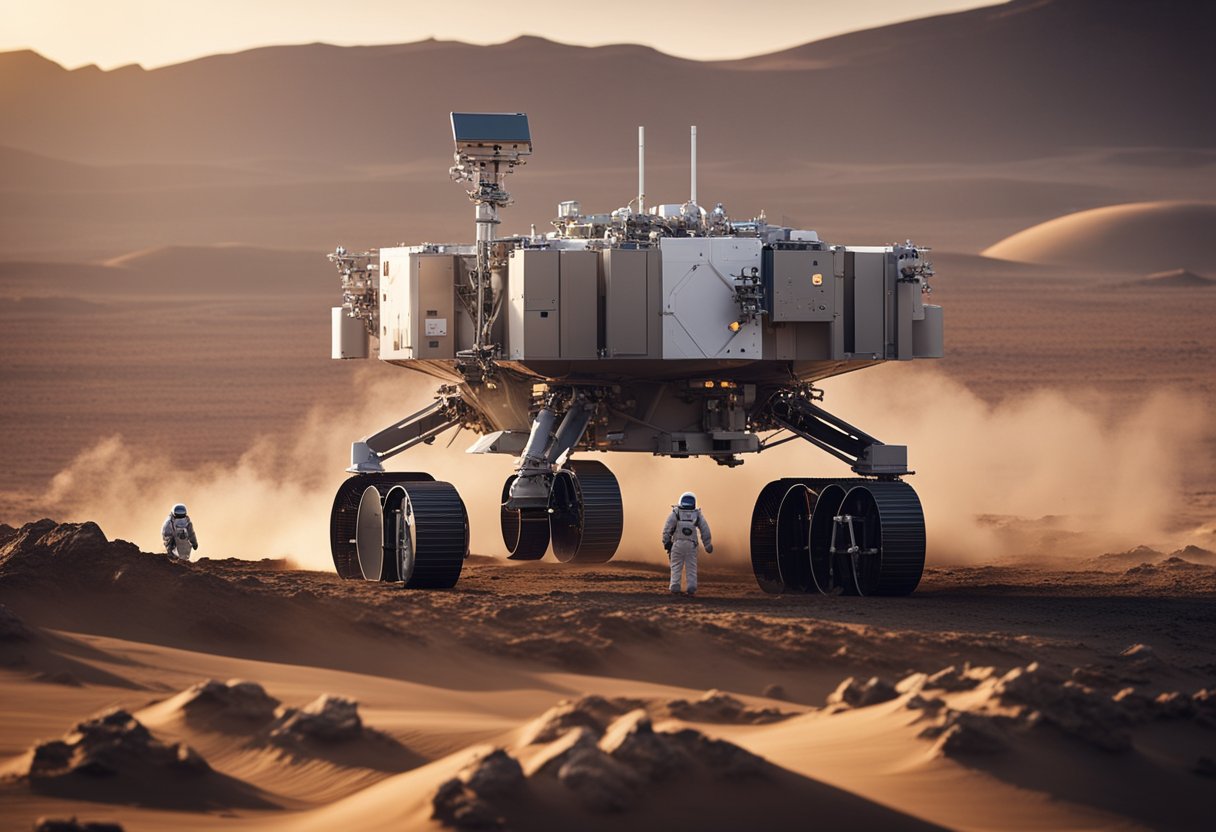
Venturing beyond Earth has been a human aspiration for decades, achieved through both manned missions and robotic explorers. The next frontier in space exploration involves not only visiting distant celestial bodies but also harnessing their resources. Known as space resource utilisation (SRU), this concept is integral to advancing human presence in the cosmos. By using materials found on the Moon, Mars, and asteroids, we can build infrastructure, support life, and fuel further exploration without relying solely on supplies from Earth.

SRU is underpinned by technologies capable of locating, extracting, and processing materials in the harsh conditions of space. These techniques have the potential to revolutionise deep space missions, making long-term colonisation more feasible. Economically, utilising space-based resources could alter the cost dynamics of space travel and create new markets. However, questions around the legality of claiming and using off-world resources remain, with international agreements needing clear guidelines for operations within this new frontier.
Space Resource Utilisation (SRU) and In Situ Resource Utilisation (ISRU) are essential frameworks for supporting human life and operations off Earth. Our understanding and development in these areas are crucial for the longevity and sustainability of space missions.
SRU refers to the process of identifying, extracting, processing, and using the materials found in the cosmos. ISRU is a subset of SRU that focuses specifically on the resources available on extraterrestrial bodies, such as the Moon or Mars, and using these materials in situ, or on site. These strategies reduce the need to transport everything from Earth, diminishing cost and improving mission efficiency.
Human exploration beyond Earth benefits greatly from SRU and ISRU in several ways. Utilising space resources can significantly decrease the payload mass launched from Earth, resulting in lower mission costs and higher efficiency. In addition, the ability to use local resources, such as water for life support and fuel production, directly supports extended missions and human presence. This could enhance our capability to construct habitats, create tools, and provide for the basic needs of astronauts, making longer stays on other planetary bodies feasible.
Applying principles of SRU and ISRU is essential for the sustainability of off-planet human activity. Through ISRU, we can manufacture necessary supplies without relying heavily on Earth, a step that could make the settlement of other planets more sustainable. For instance, the extraction of lunar ice could provide water for astronauts and also be split into hydrogen and oxygen for fuel and breathing. As we forge paths for space tourism, documented at platforms such as SpaceVoyageVentures.com, the ingenious use of SRU will be pivotal in ensuring a long-term human presence and making space more accessible to non-professionals.
In this section, we explore the intricate legal frameworks that govern space resource utilisation and its impact on the global economy. We’ll look at international regulations that create the playing field for entities like NASA and ESA, as well as the ramifications for the burgeoning private sector.
In the legal arena, space resource utilisation is a topic of complex international deliberation. The Outer Space Treaty, which is the bedrock of space law, does not explicitly permit or forbid the appropriation of off-Earth resources. However, nations such as the United States have enacted national laws, exemplified by the Legal aspects of space resources utilization, to establish their own frameworks, underscoring the need for resources in space. Meanwhile, European counterparts rely on guidance from entities like ESA to navigate these territories within applicable international statutes.
The discourse around regulations is continuously evolving, as countries and organisations aim to promote responsible use while protecting their economic interests. A prominent example is the Space Resource Utilization as Sustainable Economic Growth stance suggesting how laws can be crafted to encourage sustainable economic growth.
From an economic standpoint, the extraction and utilisation of space resources—considering both routine satellite operations and ambitious ventures like asteroid mining—have the potential to generate substantial value. For example, materials harvested in space may be utilised by the private sector for in-situ utilisation, reducing the cost of space exploration by limiting the amount of supplies launched from Earth. Moreover, agencies such as NASA and ESA play vital roles by providing the foundational research and technology that can catapult the commercial space resource industry forward.
Our discussion takes into account the emergence of niche markets, like space tourism, with platforms such as SpaceVoyageVentures.com offering insight into future trips, making our era one of significant commercial promise. The economic models are reliant not just on the feasibility of extraction techniques but also on the legal certainty that companies can own and trade what they extract, wrestling with the juxtaposition of the free-for-all nature of space as a global commons and the capital-intensive needs of space ventures.
In this section, we outline the key technologies utilised for space resource utilisation (SRU), detailing the advancements in in situ resource utilisation (ISRU) and the latest innovations in extraterrestrial mining and manufacturing.
Our exploration of space demands revolutionary SRU technologies. The development of 3D printing has been instrumental in creating infrastructure from lunar and Martian materials; it allows us to manufacture necessary components on site, minimising the mass that needs to be launched from Earth. Meanwhile, hydrogen reduction technology is being adapted for extracting oxygen from lunar regolith, which potentially supports both life support and the synthesis of rocket fuel.
The evolution of ISRU technologies proceeds at a remarkable pace. For instance, NASA’s endeavours aim to harness space-based resources for deep space exploration, setting up sustainable infrastructure on celestial bodies such as the Moon (NASA). This involves extracting water and volatiles for life support, propellant production, and utilising local materials to 3D print habitats and tools.
In the realm of space mining and manufacturing, innovative technologies are essential for utilising extraterrestrial materials effectively. Our capacity to process raw resources into usable formats will determine the success of long-term missions. Recent missions have been planned with tools capable of drilling into the lunar surface and chemically processing the materials extracted to create building materials and breathable air (Current Objectives, Plans, and Missions). This marks significant progress towards an independent off-world presence.
In the quest for expanding human presence beyond Earth, utilising extraterrestrial materials for construction, life support, and fuel is essential. We now explore the geology and resource prospecting of the Moon, Mars, and asteroids, examining the materials these celestial bodies offer and the considerations that must be accounted for in mining operations.
The geology of the Moon and Mars reveals a bounty of resources pivotal for in-situ utilisation. Lunar regolith, the Moon’s soil, is rich in oxides that can be processed into oxygen for life support and silicon for solar panels. We’ve identified ilmenite in the regolith as a source for extracting both iron and titanium. Martian materials include regolith with different characteristics, such as a higher occurrence of valuable minerals. Utilising these resources can assist in constructing habitats and supporting life during prolonged missions.
Mars, with its more complex geology compared to the Moon, presents diverse mineralogy and the presence of water-ice, crucial for sustaining life. Prospecting on Mars requires a thorough understanding of these resources to establish a sustainable human presence.
Asteroids present a unique opportunity for resource prospecting due to their rich concentrations of valuable metals such as nickel, iron, and platinum group metals. The geology of asteroids ranges from carbonaceous chondrites rich in water and organics to metallic asteroids composed mostly of ferrous metals.
When considering asteroid mining, we must take into account the asteroids’ small size and low gravity, which affect mining operations and the costs of resource extraction. The complexities of the microgravity environment, combined with the need for specialised equipment, add layers of technical considerations that we are addressing.
We at SpaceVoyageVentures.com are documenting the process, considering all geotechnical and operational challenges presented by these extraterrestrial bodies. Our aim is to become a repository of knowledge for those interested in the prospects of space tourism and the utilisation of space resources.
In advancing our capabilities in space, we pay particular attention to the methods used to extract and process resources. This involves not only the collection of materials but also their subsequent treatment to make them usable for various applications in situ.
Extraction techniques in space face unique challenges compared to terrestrial mining. We must design mining apparatuses that can function in environments with extreme temperatures, vacuum, and varying gravity levels. For instance, mining on the Moon requires equipment that can operate during the lunar night where temperatures plummet. Robotic systems equipped with drills and scoops are under development for these purposes.
One method that has gained traction is the use of thermal processes to extract volatile compounds from lunar regolith. This process involves heating the regolith to release gases such as water vapour, which can then be condensed and collected.
Post-extraction, beneficiation and mineral processing are crucial to separate the usable minerals from the gangue. Due to the high energy costs associated with launching materials from Earth, our focus is on maximising the efficiency of these processes in microgravity.
For beneficiation, we consider techniques such as magnetic and electrostatic separation. These methods can take advantage of the unique properties of space to enhance their effectiveness, such as the absence of buoyancy and drag forces. Gravity-independent methods are particularly important for the refinement of extracted space resources.
In refining these materials, technology plays a key role in achieving the levels of purity required for their use. The extracted raw materials undergo processes like smelting or electrolysis to recover precious metals for use in fabrication of spacecraft components and life-support systems.
As we develop these technologies, it’s evident that the efforts to create sustainable practices in space resource utilisation are shaping the future of extraterrestrial exploration and settlement.
Before delving into the specifics, it is essential to understand that space resource conversion revolves around creating oxygen and fuel from extraterrestrial resources, and manufacturing items using materials found in space.
In our quest for space exploration, the production of oxygen and fuel is paramount. We utilise regolith, the lunar soil, which contains oxides that can be processed into oxygen. A prominent method we employ is molten salt electrolysis, which involves heating the regolith to a high temperature and passing an electric current through it to release oxygen.
Hydrogen, gleaned from ice deposits on the Moon or Mars, serves as a critical component in achieving the production of fuel in space. By employing processes such as Sabatier reaction, we can create methanol which, when combined with oxygen, can be used as rocket propellant.
For sustainable long-term space expeditions, we must exploit in-situ materials. Our production systems in space aim to utilise the regolith to construct basic structures and shielding. This regolith is often processed using 3D printing technology, where structures are built layer by layer, drastically reducing the need for transport of building materials from Earth.
Within our space resource utilisation strategies, the potential for space tourism cannot be ignored. For instance, the pioneering spirit of ventures like SpaceVoyageVentures.com gives an insight into the future of space tourism, which will rely heavily on local resource utilisation for infrastructure development.
In advancing space exploration, we’re continuously developing innovative technologies for the effective utilisation of resources in space environments. These technologies ensure that equipment operates efficiently, energy is harnessed sustainably, and habitats are built for extended missions.
Our endeavours in space require robust equipment designed to withstand the harsh conditions of extraterrestrial environments. For energy generation, we use solar panels extensively due to the abundant sunlight in space. We’re exploring other sustainable options such as nuclear power sources, which can provide energy for extended lunar and Martian activities. Meanwhile, the equipment brought from Earth or manufactured utilising 3-D printing technology is pivotal in mining, processing, and converting local resources like regolith into useful materials.
Creating self-sustaining habitats on other planets is integral to human survival in space. We employ advanced life support systems to recycle water and air, ensuring a constant supply of both. These systems, along with habitat construction through technologies like inflatable modules and 3-D printed structures, lay the groundwork for future space communities. Additionally, we develop technology to grow food in space, reducing dependency on Earth-based supply missions.
In the pursuit of space resource utilisation (SRU), we focus on maximising efficiency and ensuring the reliability of operations and engineering processes.
When orchestrating effective SRU operations, our imperative is to streamline every aspect of the process. This necessitates designing equipment and protocols that are not only effective in the harsh conditions of space, but also considerate of the engineering constraints we face. Efficiency manifests through the judicious use of resources and the minimisation of waste, directly impacting the sustainability and long-term viability of space missions.
Leveraging the resources available in space has the potential to significantly reduce the dependency on Earth’s supplies. For example, utilising lunar regolith for construction purposes or extracting water from lunar ice can propel our efficiency in establishing a sustained presence on other celestial bodies.
The engineering phase is critical; here, we meticulously design systems to withstand the extreme rigours of space travel. Testing these systems becomes the cornerstone that determines their performance. Rigorous testing under simulated space conditions helps us uncover any flaws and implement necessary refinements.
Our commitment to reliability mandates an iterative design and testing cycle, ensuring systems are fail-safe and capable of performing over long durations. These endeavours are accompanied by a constant assessment of potential engineering constraints, which include the limited availability of materials, challenging thermal environments, and the intricacies of remote operation.
By adopting a methodical approach to engineering and testing, we ensure our missions are poised for success, with safety and sustainability at their core.

In addressing the challenges of space resource utilisation, we must consider both the knowledge gaps and the advancement of targeted research and technologies. This ensures our efforts are not only effective but also pave the way for sustainable space exploration and potential space tourism ventures, such as those documented by SpaceVoyageVentures.com.
We recognise that considerable knowledge gaps remain in our understanding of space resources. These gaps extend to the compositional analysis of potential resources, the environmental impacts of their extraction, and the optimal utilisation of these materials in an extraterrestrial setting. Open science questions include how to harness resources in a way that mitigates space debris and how to apply these resources to support long-term human presence in space.
Our priorities in research and technology development centre around enhancing Technology Readiness Levels (TRLs) for key ISRU technologies. Achieving this involves a strategic focus on technologies that can be efficiently tested and deployed in space environments.
By systematically addressing these areas, we bolster our capabilities to sustain long-term space missions and work towards the realistic potential of space tourism and habitation.

In our examination of space resource utilisation, we uncover pivotal endeavours that mark significant milestones. These real-world applications are testament to the practical aspects of utilising extraterrestrial resources, providing valuable insights into how we can sustain prolonged human presence beyond Earth.
The Mars Oxygen In-Situ Resource Utilisation Experiment, or MOXIE, is a groundbreaking technology onboard NASA’s Perseverance rover. It has demonstrated the possibility of producing oxygen from the Martian atmosphere, which is predominantly carbon dioxide. This successful conversion process is a monumental step in supporting human life on Mars and reducing the need to carry oxygen from Earth, thereby lightening the logistical load for future missions.
Regarding lunar exploration, several lunar SRU missions have been planned to extract and utilise the Moon’s resources effectively. These missions aim to produce water, oxygen, and even construction materials directly on the lunar surface. Ground truth exploration of the Moon, such as the Artemis program, plans to leverage these technologies to establish a sustainable human presence, offering in-depth knowledge and experience that could fuel our aspirations, like those seen on SpaceVoyageVentures.com, for further space travel and even space tourism.

In this section, we’ll answer some common queries regarding space resource utilisation, providing insights into its benefits, contributions to space exploration, and legal considerations.
The exploitation of space resources offers significant advantages including mass and cost reduction of space missions, enhanced mission flexibility, and the possibility of long-term human habitation of space environments. For instance, sourcing water or oxygen from celestial bodies can support human life during extended periods in space.
ISRU is vital for sustainable exploration as it allows for the extraction and processing of local resources to support human presence and construction in space. By using materials found on the Moon or Mars, we can decrease the amount of cargo that needs to be launched from Earth, significantly lowering mission costs and improving the robustness of our exploratory infrastructure.
In 2021, important strides in space resource utilisation were made, focusing on techniques for harvesting and processing lunar regolith and extracting water ice from the Moon. This was part of a broader move to establish a sustainable human presence off Earth, which is fundamental for subsequent missions to Mars and beyond as outlined in studies by major space agencies.
NASA incorporates ISRU in its mission planning by developing technologies capable of extracting and utilising resources from the Martian environment. These endeavours aim to produce fuel, water, and oxygen from the Martian atmosphere and soil, which are crucial for long-duration Mars missions and potential habitation.
On the Moon, examples of ISRU include the extraction of lunar ice for water, harnessing regolith for construction materials, and potential oxygen production. Innovations like 3D printing structures from lunar soil are being investigated to create habitats and other necessary structures for future lunar inhabitants.
The use of space resources is governed by international treaties and national laws, such as the Outer Space Treaty and more recent legislation like the U.S. Space Resource Exploration and Utilisation Act. These laws aim to regulate the exploration and use of space resources, ensure peaceful activities, and promote international cooperation and sharing of benefits.